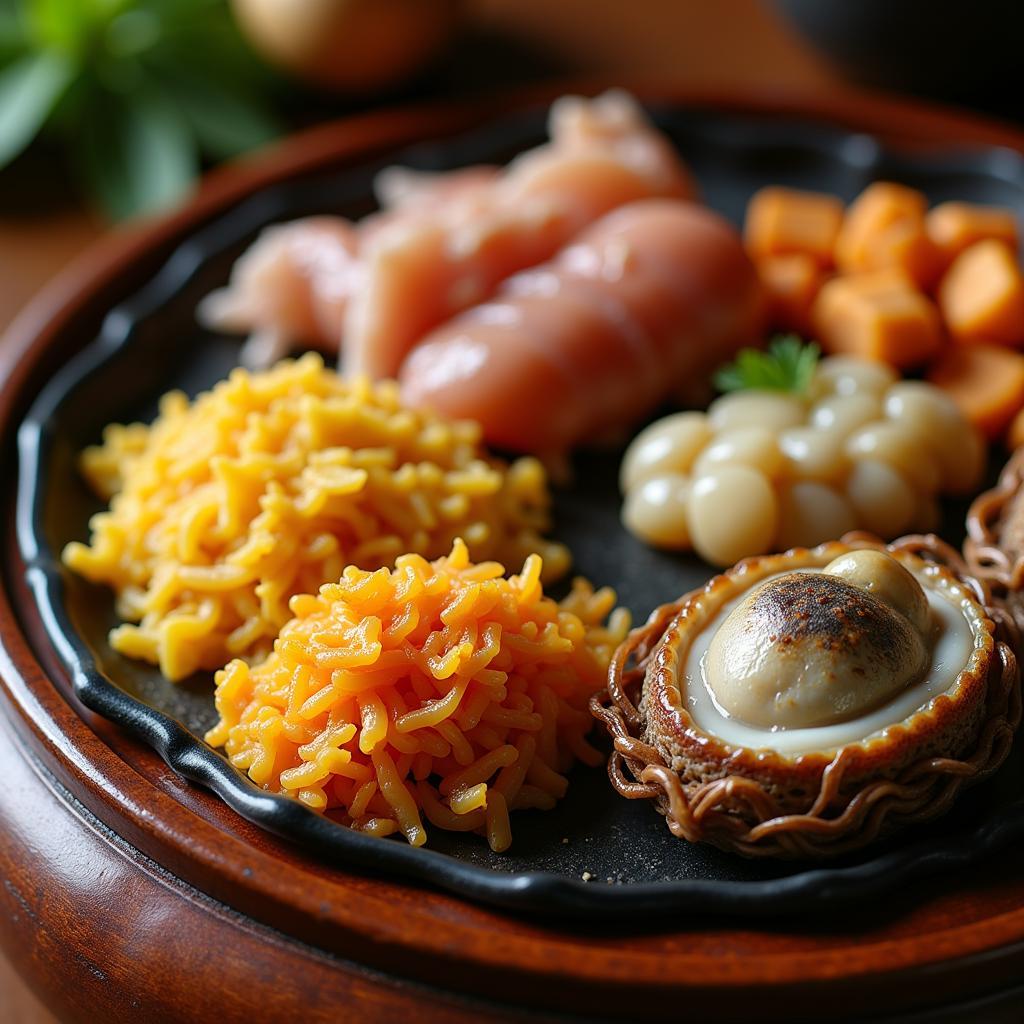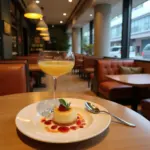Hanoi, Vietnam’s vibrant capital, is a city steeped in history and culture, evident in its captivating architecture, bustling streets, and, most importantly, its exquisite cuisine. Imperial cuisine, a culinary tradition deeply rooted in the city’s royal past, offers a unique glimpse into the lavish lifestyle of Vietnamese emperors and their courts. This article explores the fascinating world of Hanoi’s imperial cuisine, from its rich history to its intricate preparation and the opportunity to experience these flavors today.
Imperial cuisine wasn’t just about sustenance; it was an art form. Every dish was meticulously crafted, not only to delight the palate but also to visually represent the harmony and balance of the universe. The ingredients, often rare and sourced from across the kingdom, were combined with meticulous precision and presented with an elegance befitting royalty. This culinary tradition, passed down through generations of royal chefs, showcases the epitome of Vietnamese gastronomic artistry.
The History of Hanoi’s Imperial Cuisine
The origins of imperial cuisine can be traced back centuries to the various dynasties that ruled Vietnam. Influenced by both Chinese culinary traditions and local Vietnamese ingredients, the cuisine evolved into a unique and sophisticated style. Each dynasty contributed to the repertoire of dishes, reflecting the preferences and cultural nuances of their time. From elaborate banquets for state occasions to the daily meals of the royal family, imperial cuisine played a vital role in court life.
The Evolution of Royal Dishes
Over time, the dishes evolved, incorporating new ingredients and cooking techniques. The emphasis on presentation and symbolism remained constant, with chefs striving to create culinary masterpieces that were both visually stunning and delectable. Specific ingredients, such as bird’s nest, ginseng, and abalone, were reserved exclusively for the royal table, symbolizing wealth, longevity, and prosperity.  Imperial Cuisine Ingredients
Imperial Cuisine Ingredients
Experiencing Imperial Cuisine Today
While the days of emperors and royal courts are long gone, the legacy of imperial cuisine lives on. Several restaurants in Hanoi specialize in recreating these historical dishes, allowing diners to savor the flavors of the past. These culinary experiences offer a glimpse into a bygone era, allowing you to imagine the grandeur of royal dining.
Where to Find Authentic Flavors
Finding authentic imperial cuisine requires careful research. Look for restaurants that prioritize traditional cooking methods and source high-quality ingredients. Some establishments even offer cooking classes where you can learn the secrets of preparing these intricate dishes. For those looking for a truly immersive experience, some historical locations offer dining experiences set amidst restored palaces or traditional houses, providing a tangible connection to the past.
What Makes Imperial Cuisine Unique?
Beyond the exotic ingredients and elaborate presentation, several key characteristics distinguish imperial cuisine. Balance and harmony are paramount, with each dish carefully constructed to achieve a perfect interplay of flavors and textures. The use of herbs and spices is another defining feature, adding depth and complexity to the dishes. Finally, the emphasis on seasonal ingredients ensures that the cuisine remains fresh and vibrant throughout the year. If you’re looking for authentic family meals while exploring Hanoi, check out these các món ăn cho gia đình. TRAVELCAR can also cung cấp các món ăn vặt if you’re interested in exploring more casual fare.
“Imperial cuisine is a testament to Vietnam’s rich culinary heritage,” says Chef Nguyen Thi Lan, a renowned expert in traditional Vietnamese cooking. “It’s a journey through history, told through the language of food.” Another culinary expert, Mr. Trần Văn Dũng, adds, “The beauty of imperial cuisine lies in its ability to transport you to another time, allowing you to experience the opulence and artistry of the royal court.”
TRAVELCAR provides convenient transportation options, including 16, 29, and 45-seater vehicles, for exploring Hanoi’s culinary scene. Our airport transfer and tour services make it easy to discover the hidden gems of Hanoi, including the restaurants specializing in imperial cuisine. And for those interested in easy family meals, TRAVELCAR can even help you find món ăn gia đình ngon.
In conclusion, Hanoi’s imperial cuisine offers a captivating journey into the heart of Vietnamese culinary history. From its intricate preparation to its rich symbolism, this unique culinary tradition provides a fascinating glimpse into the lives of emperors and their courts. If you are travelling with children, you may also want to explore options for món ăn dặm cho trẻ em. Experiencing these flavors is a must for any food enthusiast visiting Hanoi.
FAQ
- What is the most iconic dish of imperial cuisine?
- Where can I find restaurants serving imperial cuisine in Hanoi?
- How expensive is it to experience imperial cuisine?
- Are there vegetarian options available in imperial cuisine?
- What is the dress code for restaurants serving imperial cuisine?
- Can I learn to cook imperial cuisine myself?
- What are the key ingredients used in imperial cuisine?
Need more information on food in Hanoi? See our article on logo về món ăn.
For support, please contact us at Phone: 0372960696, Email: TRAVELCAR[email protected], or visit our office at 260 Cau Giay, Hanoi. Our customer service team is available 24/7.
